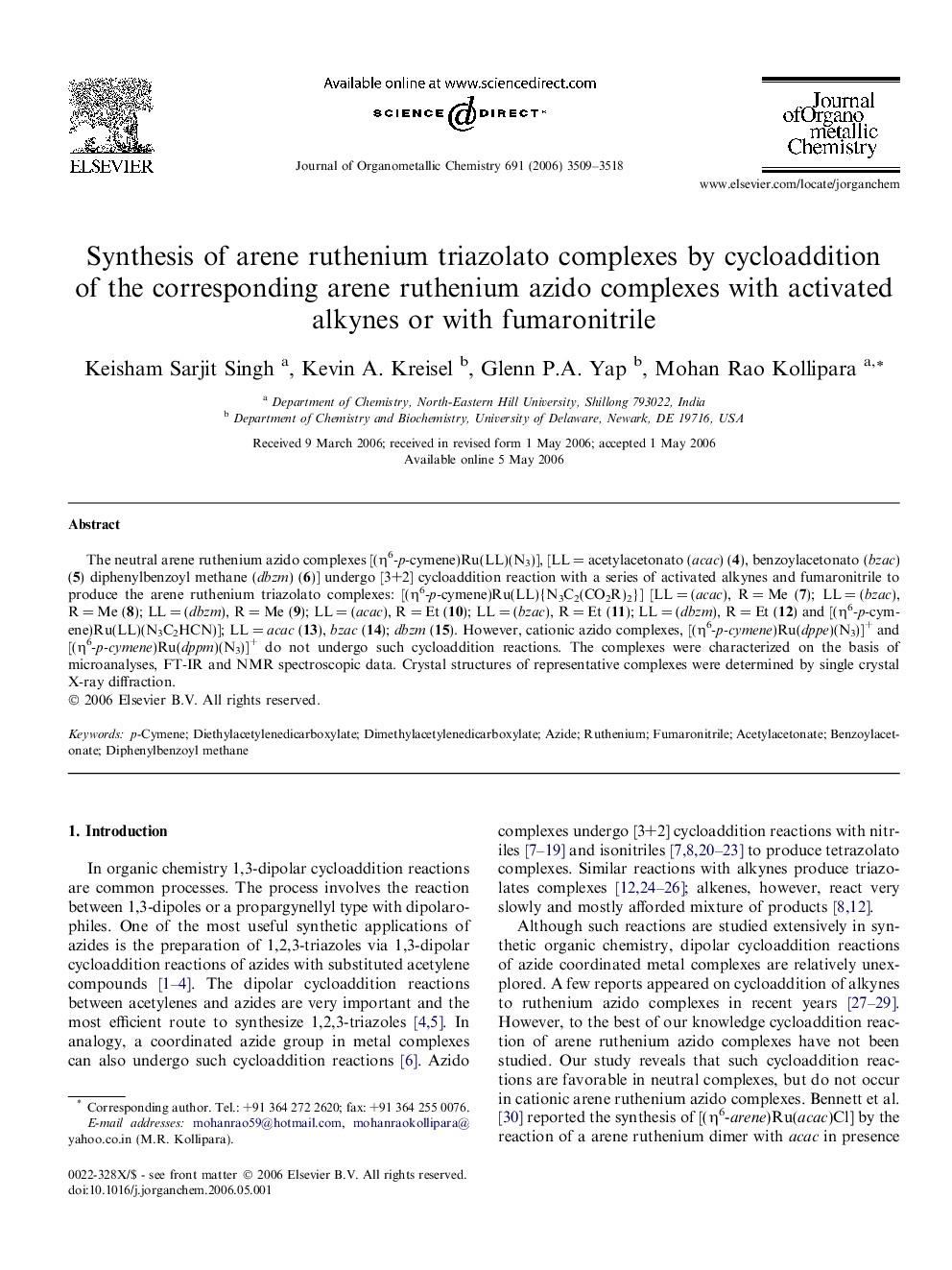| Article ID | Journal | Published Year | Pages | File Type |
|---|---|---|---|---|
| 1325856 | Journal of Organometallic Chemistry | 2006 | 10 Pages |
The neutral arene ruthenium azido complexes [(η6-p-cymene)Ru(LL)(N3)], [LL = acetylacetonato (acac) (4), benzoylacetonato (bzac) (5) diphenylbenzoyl methane (dbzm) (6)] undergo [3+2] cycloaddition reaction with a series of activated alkynes and fumaronitrile to produce the arene ruthenium triazolato complexes: [(η6-p-cymene)Ru(LL){N3C2(CO2R)2}] [LL = (acac), R = Me (7); LL = (bzac), R = Me (8); LL = (dbzm), R = Me (9); LL = (acac), R = Et (10); LL = (bzac), R = Et (11); LL = (dbzm), R = Et (12) and [(η6-p-cymene)Ru(LL)(N3C2HCN)]; LL = acac (13), bzac (14); dbzm (15). However, cationic azido complexes, [(η6-p-cymene)Ru(dppe)(N3)]+ and [(η6-p-cymene)Ru(dppm)(N3)]+ do not undergo such cycloaddition reactions. The complexes were characterized on the basis of microanalyses, FT-IR and NMR spectroscopic data. Crystal structures of representative complexes were determined by single crystal X-ray diffraction.
Graphical abstractArene ruthenium(II) β-diketonate complexes [(η6-p-cymene)Ru(LL)Cl] readily react with NaN3 to afford the corresponding azido complexes of the type [(η6-p-cymene)Ru(LL)(N3)]; where LL = β-diketonate viz., acac, bzac, dbzm. These neutral azido complexes undergo [3+2] cycloaddition reactions with activated alkynes and fumaronitrile to produce the corresponding arene ruthenium triazolato complexes.Figure optionsDownload full-size imageDownload as PowerPoint slide
